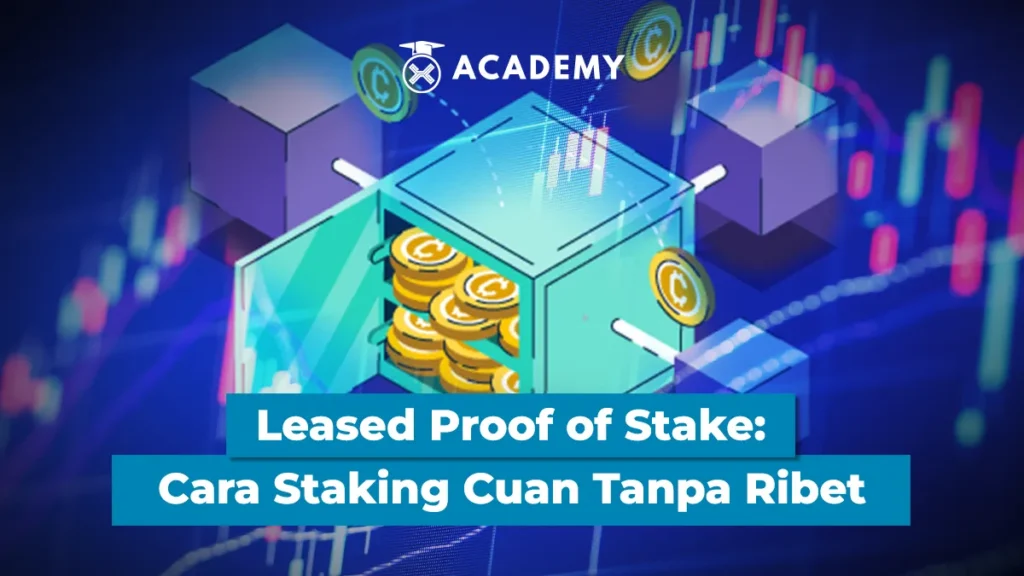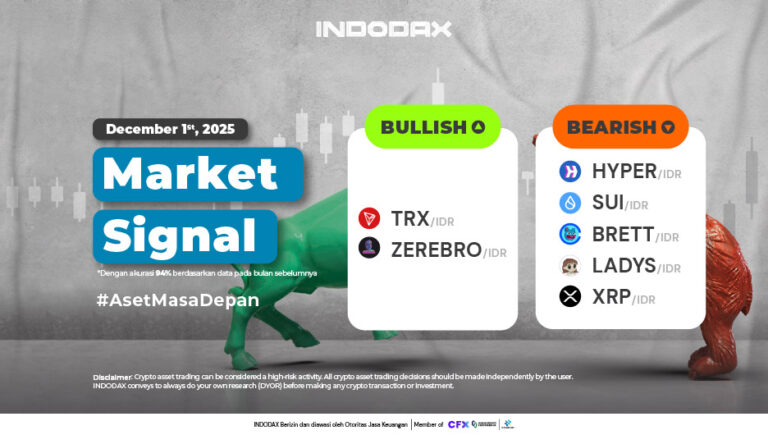Imagine many people wanting to participate in crypto staking, but are hampered by the large capital requirements or the hassle of managing their own servers.
Actually, there’s a way to become a validator on a blockchain without having to run your own node: by “renting” your tokens. This is where the concept of Leased Proof of Stake (LPoS) emerges as a practical solution.
In this article, we’ll delve deeper into how LPoS works and how you can participate without a large investment.
What is Leased Proof of Stake (LPoS)?

Leased Proof of Stake, or LPoS, is a variant of the Proof of Stake (PoS) consensus mechanism that allows token holders to “rent” their coins to validator nodes on a blockchain network.
These nodes, or validators, are responsible for validating transactions and proposing new blocks.
By leasing tokens, crypto asset holders can earn passive income in the form of a portion of the transaction fees received by validators, without having to be directly involved in the block creation or transaction validation process.
This concept was first popularized by the Waves blockchain and is now gaining traction because it offers an easier way to participate in the blockchain ecosystem.
In LPoS, there are two main roles: the token holder acts as the renter and the node acts as the rent recipient.
The renter retains control of their tokens in a personal wallet, while the validator receives the right to use them in the consensus process.
Unlike traditional PoS, LPoS has several advantages. The system is decentralized, allowing anyone to participate without special permission, with validators randomly selected based on their stake.
New blocks are also randomly generated to prevent manipulation. Additionally, rewards or returns are derived from transaction fees, making it a practical and safe way to earn passive income from crypto assets.
How Leased Proof of Stake Works
To understand how Leased Proof of Stake works, let’s look at the process in simple terms. First, a token holder selects a trusted validator node and creates a leasing transaction through an official wallet or platform that supports LPoS.
Although the token is “leased,” ownership remains with the holder and is only bound by the leasing contract.
Once the token is leased, the token is added to the validator’s stake. This increases the validator’s chances of being selected to propose and validate new blocks on the blockchain network.
When a validator successfully creates a block, they receive a transaction fee as a reward. The validator then shares a portion of the reward with all token holders who leased their coins, according to their respective proportions.
This reward distribution process occurs automatically, allowing token holders to earn passive income without having to actively participate in block creation or transaction validation.
With this scheme, LPoS allows for safe and convenient participation in blockchain consensus while maintaining full control over their crypto assets.
Advantages of LPoS Over Traditional Staking
Leased Proof of Stake (LPoS) offers various advantages that make staking easier, safer, and more profitable, especially for token holders with limited capital. These include:
1. Low Capital Access
LPoS reduces barriers to entry for anyone wanting to participate in staking. Token holders don’t need to maintain a large balance because there’s no minimum stake.
Even small token holders can earn rewards by “renting” their assets to larger validators.
2. No Need to Run a Node
Unlike traditional staking, LPoS participants don’t need to operate their own node. This saves on server costs, time, and technical expertise, allowing anyone to participate without hassle.
3. Potential Passive Income
Token holders receive regular rewards from validators based on the proportion of their leased tokens.
Rewards come from transaction fees collected by validators, allowing participants to earn passive income without directly participating in block validation or the creation of new blocks.
4. Democratic participation and stronger decentralization
LPoS is decentralized, allowing anyone to contribute to the network.
Validators are randomly selected from the staking pool, providing a fairer opportunity to participate than traditional staking, which only benefits large token holders.
LPoS Risks & Disadvantages
While Leased Proof of Stake (LPoS) offers many advantages, this model also has a number of risks and limitations that should be considered before participating, including:
1. Risk of Selecting a Non-Transparent Node
If token holders lease their coins to less trustworthy validators, the transparency and security of rewards can be compromised. Token holders should choose validators with a good reputation.
2. Potential Reward Fluctuations
The rewards received depend on the validator’s performance. If a validator is rarely selected to validate blocks or faces technical difficulties, the rewards received can fluctuate.
3. Centralization
If too many tokens are leased to a single large validator, the chances of that validator dominating blocks increase, reducing network decentralization.
4. Dependence on Network Stability
LPoS remains dependent on the blockchain network and validator performance. Downtime or technical issues at a node can impact the validation process and reward distribution.
Real-World Examples of LPoS Implementation
Leased Proof of Stake (LPoS) has been implemented in several blockchain projects as a way for token holders to earn additional profits without having to manage their own nodes.
One of the most well-known examples is the WAVES blockchain. On WAVES, token holders can lease their coins to validators. To participate in block creation, the party seeking a lease requires a minimum of 1,000 WAVES.
The reward received by the leaser is calculated based on the percentage of the validator’s block production rate after being selected. This allows token holders to earn passive income proportional to the number of coins leased.
Besides WAVES, other blockchains such as NIX are also starting to adopt LPoS. On this platform, users can stake coins through multiple digital wallets without having to worry about trusting third parties or merchants.
Staking service providers receive incentives through leasing smart contracts approved by token holders.
The implementation of LPoS in blockchains like WAVES and NIX demonstrates how this mechanism can be an attractive alternative for earning additional rewards from crypto assets.
However, LPoS is just one of many ways to leverage crypto investments, and token holders still need to consider the risks and potential rewards that depend on validator performance.
How to Get Started with LPoS
Getting started with Leased Proof of Stake (LPoS) can be done in a few simple steps, but it’s important to pay attention to the details to ensure a safer and more profitable staking experience. These include:
1. Choose a blockchain that supports LPoS
Start by selecting a blockchain platform that offers a token leasing mechanism, such as WAVES. Ensure the blockchain has a good reputation and an active community to ensure the staking process runs smoothly and securely.
2. Determine a validator node
Validator selection is crucial because their performance impacts the rewards received.
Choose a node with a trusted reputation, high transparency in reward distribution, and a stable track record to increase your chances of earning maximum rewards.
3. Use an official wallet for leasing
Always lease tokens through an official wallet or platform that supports LPoS. This way, the tokens remain under the owner’s control and are protected from the risk of loss due to technical errors or third parties.
4. Monitor rewards and manage leasing
After leasing, it’s important to regularly monitor incoming rewards. Validator performance can change over time, for example due to downtime, the number of tokens they manage, or the frequency with which they are selected to validate blocks.
If reward results do not meet expectations, or you find another validator with better performance, the leased tokens can be transferred or the lease canceled at any time.
This flexibility allows token holders to constantly adjust their staking strategy, maximize returns, and ensure assets remain productive without losing full control.
Safety Tips for Staking with LPoS
To ensure a safer and more profitable staking experience using Leased Proof of Stake (LPoS), there are several important things to consider:
1. Choose a node with a high uptime history
Ensure the validator you choose has a stable performance record. Nodes with high uptime increase the chances of being selected to validate blocks and receiving consistent rewards.
2. Check the reward distribution
Check the percentage of rewards distributed by the validator and the frequency of payments. Transparency and consistency in reward distribution are crucial for achieving staking results that meet expectations.
3. Don’t lease your entire balance
Keep some tokens reserved for liquidity needs or other urgent needs. This ensures you still have access to your assets without relying entirely on the leasing process.
Conclusion
So, that was an interesting discussion about Leased Proof of Stake: A Hassle-Free Way to Stake Profits, which you can read in full at the INDODAX Academy.
In conclusion, Leased Proof of Stake (LPoS) offers a practical way to stake and earn profits without the hassle of managing your own node.
By leasing tokens to trusted validators, you can earn passive rewards while maintaining full control over your assets.
For those interested, start trying LPoS in a blockchain ecosystem that has been proven safe and transparent, such as WAVES.
Don’t forget to deepen your knowledge of staking and other Proof of Stake mechanisms by reading related articles on Indodax Academy to make your crypto investment strategy more effective and profitable.
By the way, besides broadening your investment horizons, you can also stay updated with the latest crypto news and monitor digital asset price movements directly on the INDODAX Market.
For a more personalized trading experience, explore our OTC trading service at INDODAX. Don’t forget to activate notifications to stay up-to-date with the latest information about digital assets, blockchain technology, and various other trading opportunities, only at INDODAX Academy.
You can also follow our latest news on Google News for faster and more reliable access to information. For an easy and secure trading experience, download the best crypto app from INDODAX on the App Store or Google Play Store.
Maximize your crypto assets with the INDODAX Earn feature, a practical way to earn passive income from your holdings.
Also follow our social media here: Instagram, X, Youtube & Telegram
FAQ
1.Is LPoS the same as DPoS?
No, DPoS uses a delegate voting system, while LPoS is purely token leasing without voting.
2.Can you lose money in LPoS?
Potential losses can arise if a node doesn’t pay rewards or is penalized.
3.Which blockchains support LPoS?
Waves is the most popular, but other projects are developing similar variants.
4.How long does the leasing process take?
Depending on the contract and node, it can be daily, weekly, or flexible.
Author: Boy






 Polkadot 8.90%
Polkadot 8.90%
 BNB 0.51%
BNB 0.51%
 Solana 4.86%
Solana 4.86%
 Ethereum 2.37%
Ethereum 2.37%
 Cardano 1.18%
Cardano 1.18%
 Polygon Ecosystem Token 2.14%
Polygon Ecosystem Token 2.14%
 Tron 2.85%
Tron 2.85%
 Market
Market


